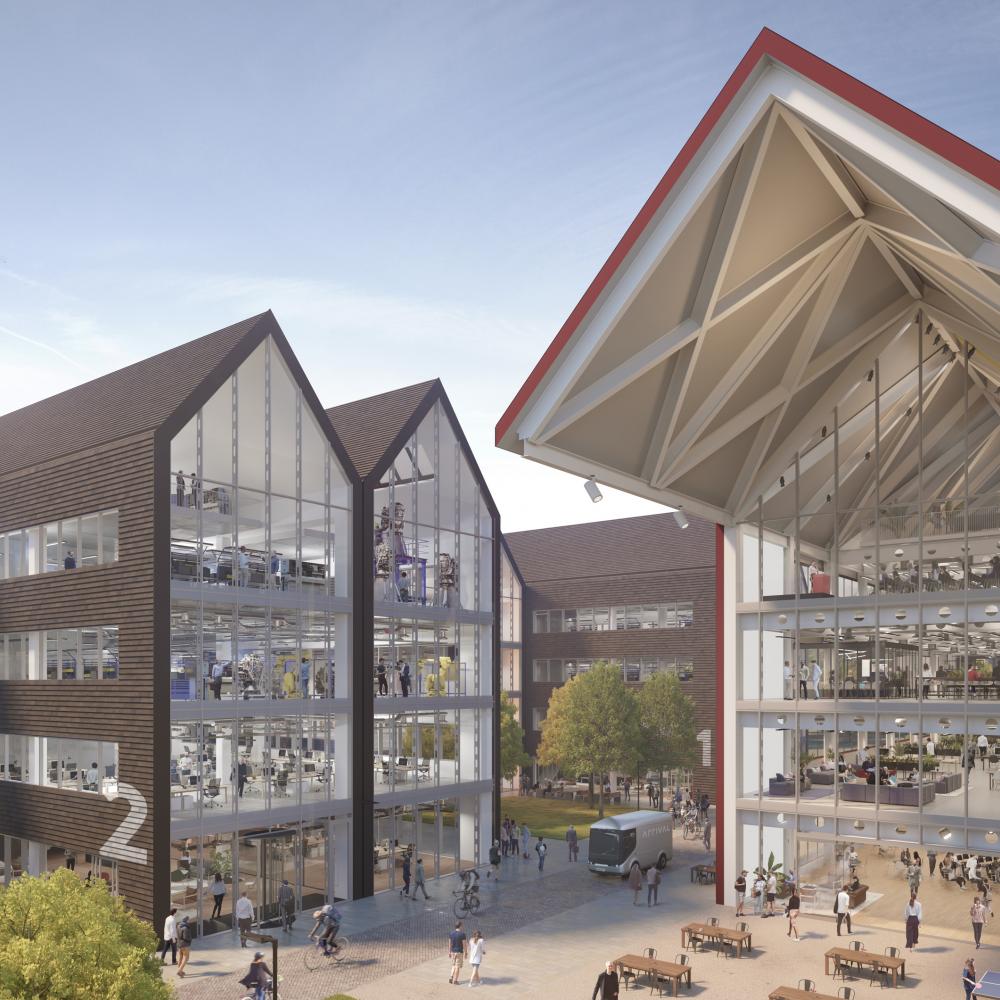Thomas White Oxford, the development company of St John’s College, is currently managing a development project which will turn a college-owned meadow into a new office, laboratory, and residential space.
The ongoing project has attracted protest from the local and student community, with Wolvercote residents campaigning outside of St John’s College. Several key issues that have been raised include biodiversity, traffic and pollution, and affordability of homes.
St John’s MCR’s Environment and Ethics officers recently met with William Donger, director of Thomas White Oxford; Olivia Lane-Nott of Spacecraft Consulting, who is managing Oxford North’s community relations; Rob Linnell of Savillis, who was managing the planning applications; and Zoe Hancock, principal bursar of St. John’s, to enquire about these particular issues. Cherwell has seen an email to members of St John’s MCR.
In the email, the E&E reps highlighted that they asked how Oxford North intends to achieve the net 5% biodiversity gain as required by law for new developments. This question was asked in light of offsetting measures already planned at Cutteslowe park, yet these measures would only account for around half of the biodiversity loss caused by the development of Oxford North as assessed by an environmental consultancy. Donger assured that the legal target would be met through biodiversity gain within the main site as the project continues.
The email went on to state that in regards to traffic and pollution, Linnell cited previous and planned improvements to the A34, A40, and A44 around the premises and Wolvercote roundabout as being able to mitigate any issues. The development is set to have private car parking at a lower level than is standard for such a business park, intended to reduce any traffic into the site. Linnell explained that modeling on the impact of deliveries and commuters coming in off the A40 had been done to a level satisfactory for planning and permission purposes. However, Linnell offered no exact figure for the expected change to traffic levels in the area.
Regarding traffic and pollution during the construction phase, Lane-Nott cited the creation of a community liaison group available for nearby residents to report their issues and concerns.
Another concern held by residents is the affordability of the new homes on the site. The plan is for 480 homes to be built, with the 35% quota for affordable housing perhaps being increased to 50% subject to the financial viability of the site as is council requirement, explained Donger. Of the 35% of affordable housing, 80% will be available for rent with an income cap in place and 20% will be sold at affordable prices (80% of free market value). The remaining 65% of homes will enter the free market probably to be sold. Donger explained that the ideal outcome for the site will be a contained community, with workers living and working within Oxford North.

Spacecraft Consulting later told Cherwell that this “contained community” should look like a “24/7 vibrant and connected district for people to live, work, play, learn and visit and enjoy – a place that people want to visit with open spaces, three new parks, public art and culture and children’s play areas.
“We have a Section 106 agreement with Oxford City Council, and Oxfordshire County Council as highways authority. It means we are legally bound to deliver more than 40 commitments to which we have agreed so that Oxford North is a strong, vibrant and sustainable community.”
Some of these commitments include “reducing car dominance,” “a commitment to use materials from within the local area to minimise travel distance,” “a Soil Re-source Plan to ensure minimal amounts of soil are taken off-site,” “outreach to local schools,” with “jobs being offered to local people,” “boost the economy of circa £150 million,” and “enable gross jobs circa 4,500.”
The E&E officers stated in their email that “clearly there are some open questions left after this meeting, many of which will only be answered as the project progresses. [Thomas White Oxford] was adamant to stress throughout our conversation that, at all stages of the project, all requirements towards the council were fulfilled. It will be important for the St John’s student community to keep an eye out for how these assurances are delivered on as the project progresses.”
In a later consultation between Cherwell and Oxford North’s community relations manager, it was clarified that the net 10% biodiversity gain will be reached through off-site meadows to improve Cutteslowe Park biodiversity and on site measures through significant tree and shrub planting with “circa 1,000 new trees to create a more diverse habitat across the site, pollinator-friendly plants to benefit insects and the whole food chain.”
Featured Image: Spacecraft Consulting


